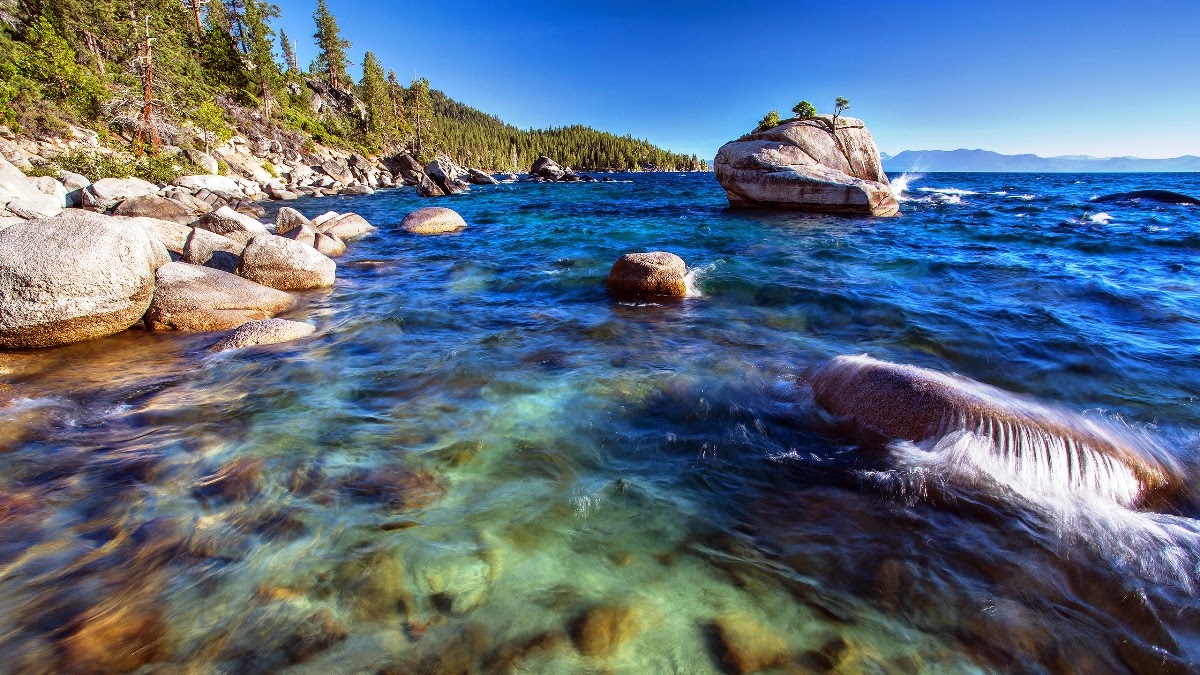One of the great natural wonders
of the world, the Iguazu Falls are situated near the border of Brazil,
Paraguay, and Argentina. Iguazu Falls, called Foz do Iguaçu in Portuguese, and
Cataratas del Iguazú in Spanish, lie on the Argentina & Brazil border and
are on the list of UNESCO World Natural Heritage Site. The name of the waterfalls
comes from the Guaraní word for "great water". The Iguazu Falls is Taller
than Niagara Falls, twice as wide with 275 cascades spread in a horseshoe shape
over nearly two miles of the Iguazu River. The magic beauty of Iguazu Falls is
the result of a volcanic eruption which left yet another large crack in the
earth.
In 1541; the first Spanish traveler
to see the falls was Álvar Núñez Cabeza de Vaca but the vast power of the falls
was not fully utilized until the construction of the huge Itaipu hydroelectric
power plant built jointly by Paraguay and Brazil. It was completed in 1991 and opens
for public. The dam provides substantial 12,600,000 KW of power almost 40% of Argentina
and Brazil power needs. The dam is one of the largest in the world and touted
by both countries as a masterpiece of modern technology.
During the rainy season of
November - March, the rate of flow of water going over the falls may reach
450,000 cubic feet (12,750 cubic m) per second. To view the matter of fact, the
tremendous amount of water thundering down 269 feet. The sheer beauty is bigger
than four times the width of Niagara Falls. Iguazu Falls are divided by numerous
islands into separate waterfalls. One of the best known is Devil's Throat or
Gargantua del Diablo with its continuous spray high over the falls. Other
notable falls are the San Martin, Bossetti, and Bernabe Mendez.
The Iguazu falls are part of a
singular practically virgin jungle ecosystem protected by Argentine and
Brazilian national parks on either side of the cascades. Almost 2/3 of the
falls are on the Argentinian side where you can also trip to Iguazu National
Park consists of jungle trails and bird hikes. You may plan a full day trip to
the park to fully adore the wildlife flora and fauna. Therefore; it is possible
to grasp the falls and surrounding area in a lightning trip but it is highly
recommended to make a plan for at least two days. The view from the Brazilian
side is the most panoramic and there’re helicopter rides out over the falls
from Foz do Iguaçu. You may also take boat rides out to the falls.
If you want to some special
photographs then you’ve to visit in the early morning, when lights are in the
best shape. It is believed that best seen from the Brazilian side is the remarkable
Devil's Throat, Garganta del diablo, where fourteen falls drop 350 feet with
such force that there is always a 100 foot cloud of spray overhead. The amazing
seen is to watch the extraordinary rainbow! For a closer view, walk through the
subtropical forest of National Iguaçu Park to the base of Salto Floriano and
take the elevator to the top of the falls. Or you may walk out over the falls
at Salto Union.
However; from the Argentine side
you can proceeds a series of catwalks over the water rushing into Devil's
Gorge. However; protective rain suits are provided. There’re some areas where
it is possible to swim in the spray of the cascades. But highly recommended to
seek locals guide and instructions but be sure that you might have a resulting
problem with cuticle parasites. Therefore; best times to view the real beauty
of Iguazu Falls are in the spring and fall. Summer is intensely tropically hot
and humid, and in winter the water level is considerably lower. There’re hotels
on both sides of the river and many tour agencies provide sightseeing
opportunities around the area.
You may found more detail of hotels on the internet
for Brazilian side of the falls, or these on the Argentine side. Downstream
from the falls where the Parana and Iguazu rivers meet, so do the borders of
Argentina, Brazil and Paraguay. Each country has created a landmark in their
national colors on a spot in each of their countries where you can understand
all three. To the matter of reaching the location it is not too difficult as both
the Brazilian and Argentinean cities have nearby airports. Upon seeing Iguazu,
the United States' First Lady Eleanor Roosevelt reportedly exclaimed "Poor
Niagara”. Iguazu is also often compared with Southern Africa's Victoria Falls
which separates Zambia and Zimbabwe. The only wider falls are tremendously
large rapid-like falls such as the Boyoma Falls. With the flooding of the
Guaíra Falls in 1982, Iguazu currently has the second-greatest average annual
flow of any waterfall in the world, after Niagara Falls. Iguazu Falls
experiences a humid subtropical climate with abundant precipitation and high
temperatures all year-round.
Iguazu Falls, wonder of nature from Planetphoto on Vimeo.
Iguazú / Iguaçu / Iguassu falls - FPV Aerial videography - Scarab Reconn FPV Quad from glambert7777 on Vimeo.






















































